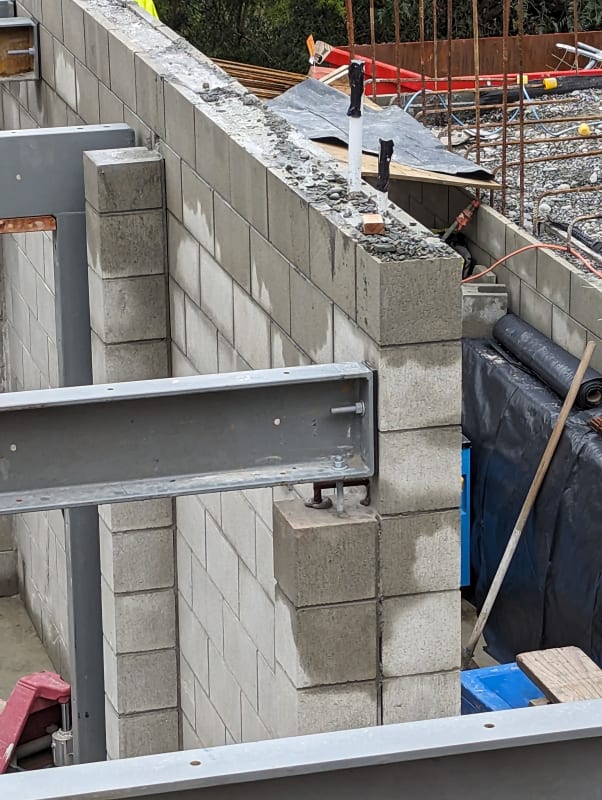Greenalleycat
Structural
- Jul 12, 2021
- 508
Hopefully my image upload works...
I turned up to inspect a site today and noticed a steel beam floating in space
Turns out the blockies got the column height wrong and need to add an extra half block under this beam
They were planning to do this with the beam in-situ; it cannot be readily removed now as bolts have been epoxied in at each end that lock it in place unless they are drilled out
I'm not happy with this on two counts
1) No guarantee of positive seating of the beam which is structurally required as the bolts weren't designed for permanent loads on them, they are effectively just stability bolts
2) I'm not happy with wet concrete going against the beam coating... in my head this is just asking to create a corrosion issue as the beam will be sitting there exposed afterwards
I'm confident in my position on #1 but I'm not sure about the validity of #2 - is this a fair concern?

I turned up to inspect a site today and noticed a steel beam floating in space
Turns out the blockies got the column height wrong and need to add an extra half block under this beam
They were planning to do this with the beam in-situ; it cannot be readily removed now as bolts have been epoxied in at each end that lock it in place unless they are drilled out
I'm not happy with this on two counts
1) No guarantee of positive seating of the beam which is structurally required as the bolts weren't designed for permanent loads on them, they are effectively just stability bolts
2) I'm not happy with wet concrete going against the beam coating... in my head this is just asking to create a corrosion issue as the beam will be sitting there exposed afterwards
I'm confident in my position on #1 but I'm not sure about the validity of #2 - is this a fair concern?

